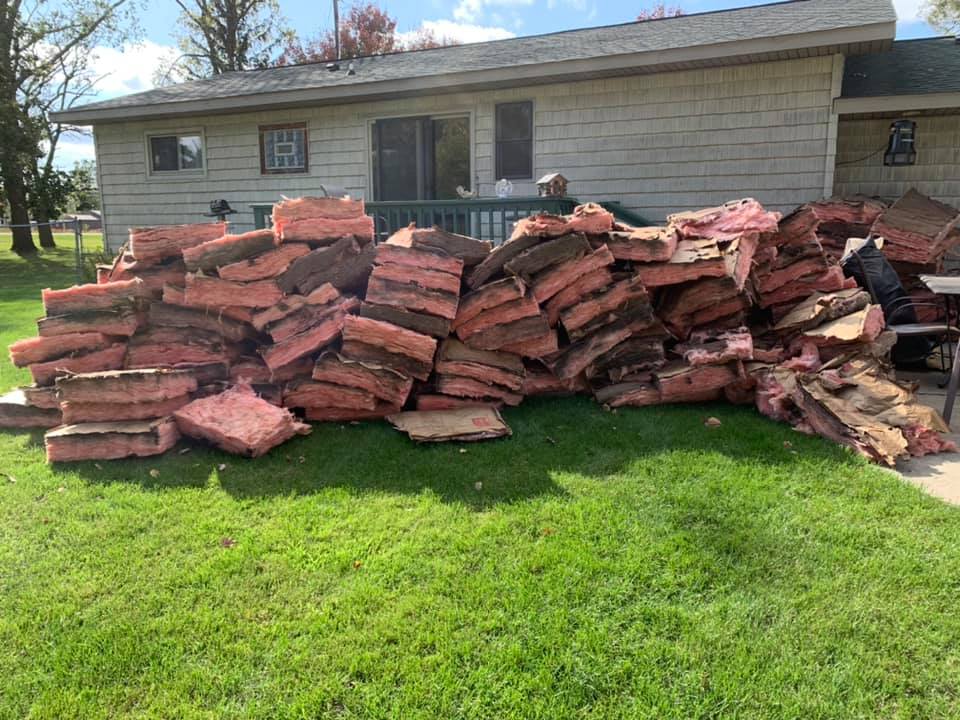4 Reasons Why Fiberglass Insulation Doesn't Work


In its glory days fiberglass insulation was considered the gold standard.
But if your home is still relying on fiberglass insulation today you are behind the times. Kind of like watching a black and white TV with three channels in a day of smart TVs with Netflix and Hulu.
Here’s a few reasons why fiberglass insulation is outdated and out of touch in today’s construction environment.
Fiberglass Insulation is Susceptible to Cold Temperatures
Fiberglass insulation can lose up to 40% of its insulating capacity when outside temperatures dip below 20°F, according Rastra, an Insulated Concrete Form company. When this happens, R-19 fiberglass insulation performs as if it were only R-9.
“When you need it the most, fiberglass insulation cannot properly insulate, “ Rastra writes.
Ouch.
In Michigan, if you haven’t noticed yet, it’s cold a lot. Don’t let fiberglass insulation make you feel even colder.
Fiberglass Insulation Struggles to Release Moisture
Once fiberglass insulation becomes damp, usually through leaks in a home’s wall, it’s time to sound the alarms. Raise a white flag. Declare a state of emergency.
That’s because insulation performance decreases dramatically.
A 1.5% increase in moisture content in fiberglass insulation can reduce its R-value by up to 50%, according to Rastra. That’s not a typo.
Because of its fibrous composition, fiberglass usually retains moisture. When moisture is trapped in a wall insulated with fiberglass, the insulation becomes damp and starts to break down over time.
“There’s nowhere for that moisture to go,” said Eric Garcia, General Manager at RetroFoam of Michigan.
Cue mold growth. Damage to your home. Unhappy homeowner.
Fiberglass Insulation is Difficult to Install Properly
Fiberglass must be completely enclosed on all six sides of the the cavity without gaps or air pockets, otherwise it’s not as effective, Rastra suggests. It also must be fully expanded to allow its air pockets to perform.
If a worker stuffs it into an opening or its compressed by electrical and plumbing lines, good luck with performance. Unfortunately, this happens a lot on the job site.
“For small jobs, no insulation is more convenient than (fiberglass) batts or blankets. However, its low cost and convenience come with a downside: It's difficult to install well,” the Green Building Advisor writes.
Fiberglass Insulation is Prone to Air Flow
Finally, Garcia said fiberglass insulation simply can’t stop air flow in any significant fashion.
“Most of the problems fiberglass has lead back to air passing through it,” he said.
In fact, the filter material for most furnace filters is fiberglass because it has little resistance to airflow, according to Southwest Building & Energy Technologies.
“Can that same material effectively insulate a structure? Can you imagine insulating a house by stuffing furnace filters into the walls and ceiling?” SBET writes. “The weakest feature of fiberglass is its resistance to airflow. With this new info, technology and updated building standards, fiberglass is typically the worst option for an insulation material.”
The Best Choice for Home Insulation
As you can see fiberglass insulation faces several performance challenges. So, what type of insulation should be used to insulate a home’s walls, crawl space, and attic?
Foam insulation addresses all of the challenges that fiberglass insulation creates. It keeps a consistent R-Value across all temperatures, acts as an air seal to block moisture and airflow, and can be installed in open and closed cavities in new builds and in retrofitting existing homes. Besides these benefits foam insulation is safe, reduces drafts and problem areas in the home, and often reduces energy bills by up to 50%.
To learn more about foam insulation, check out the Learning Center on our website.

